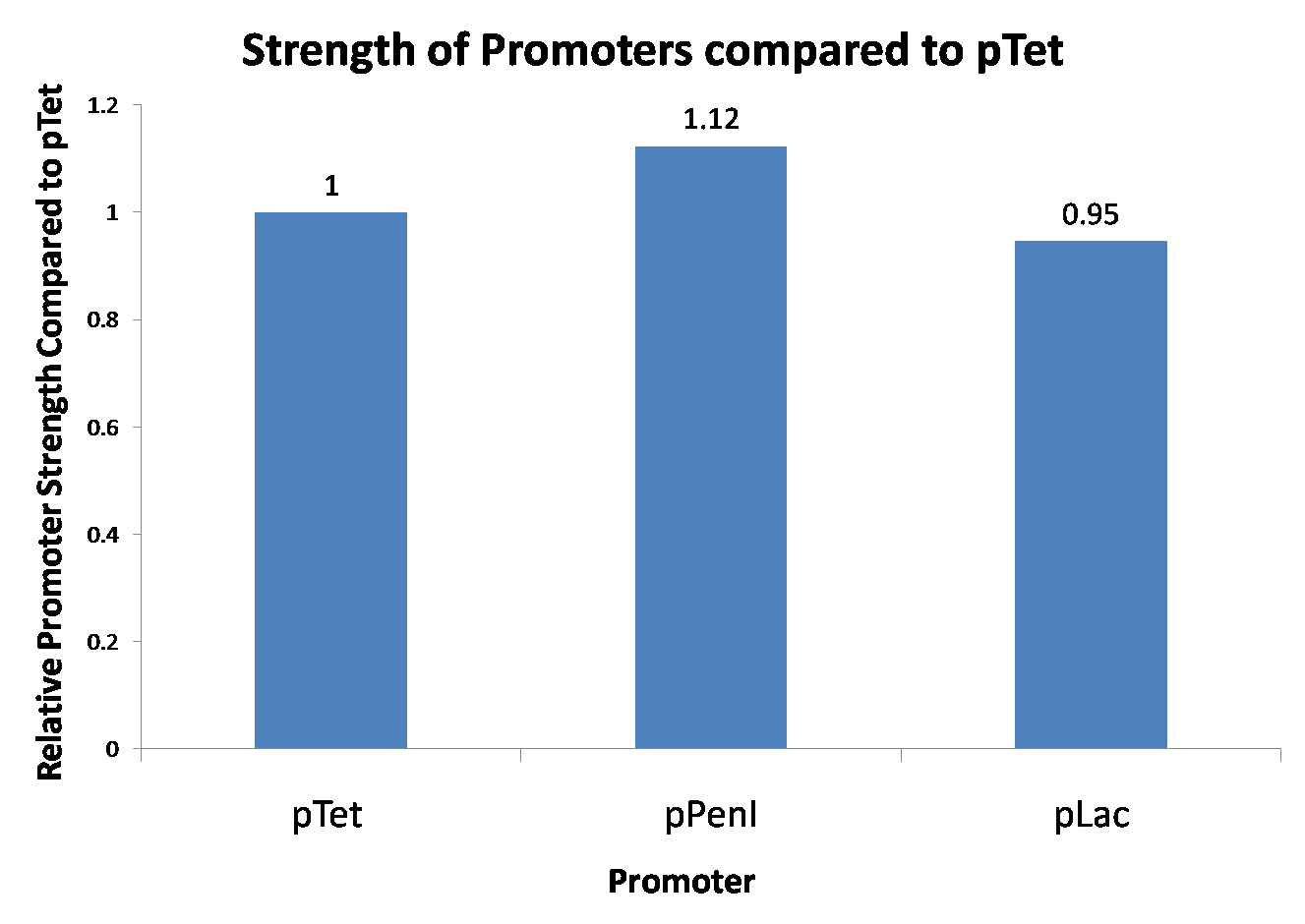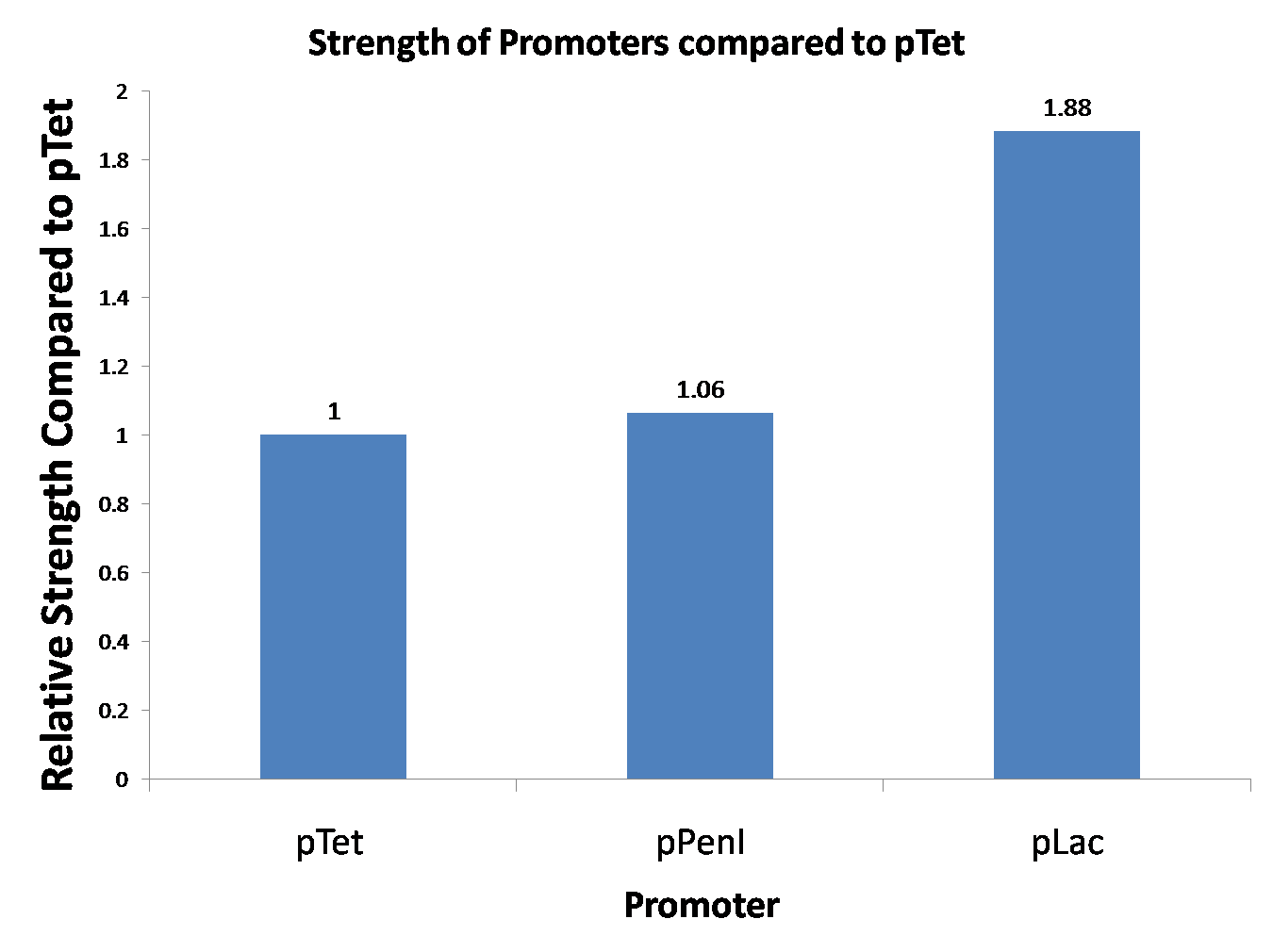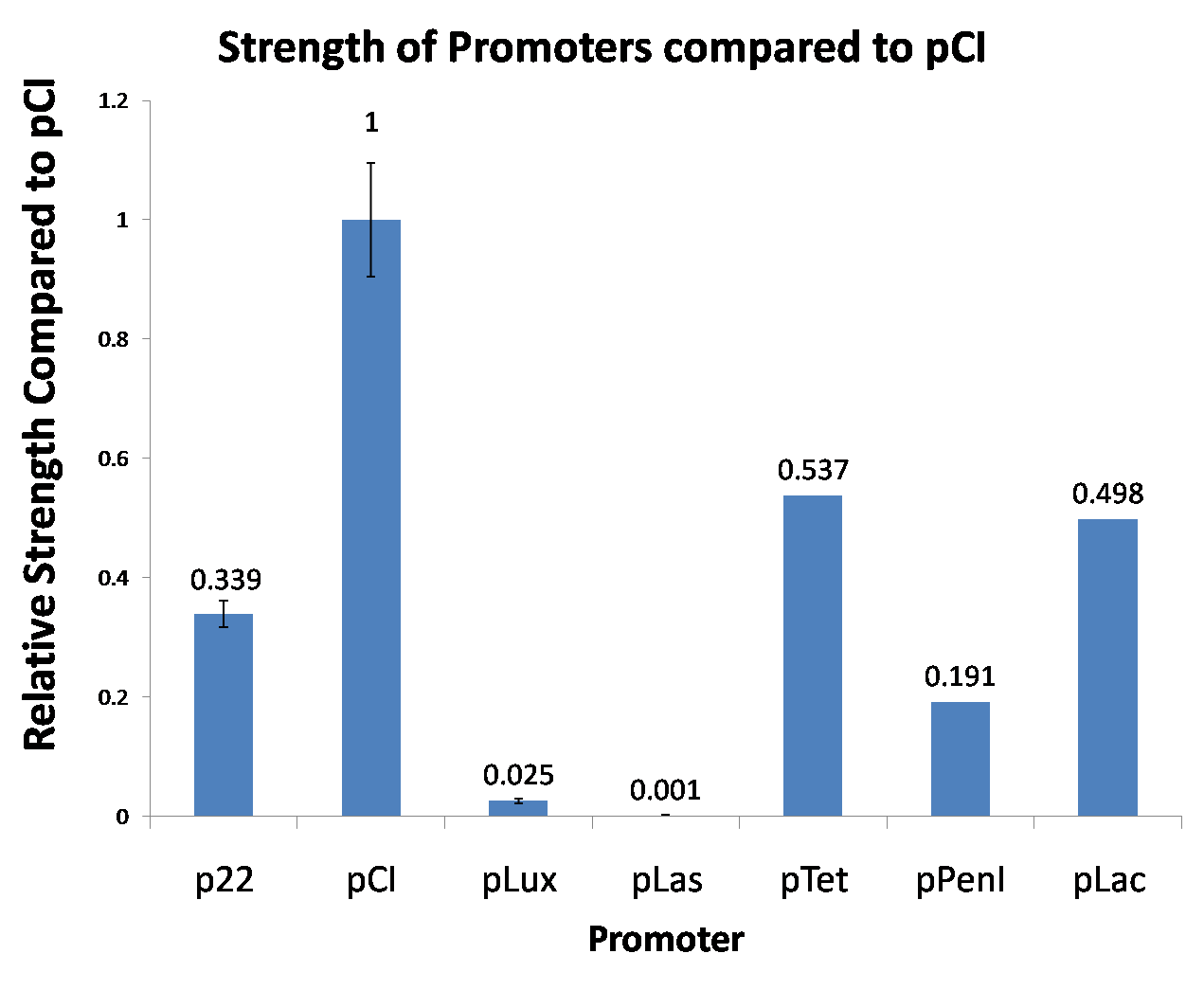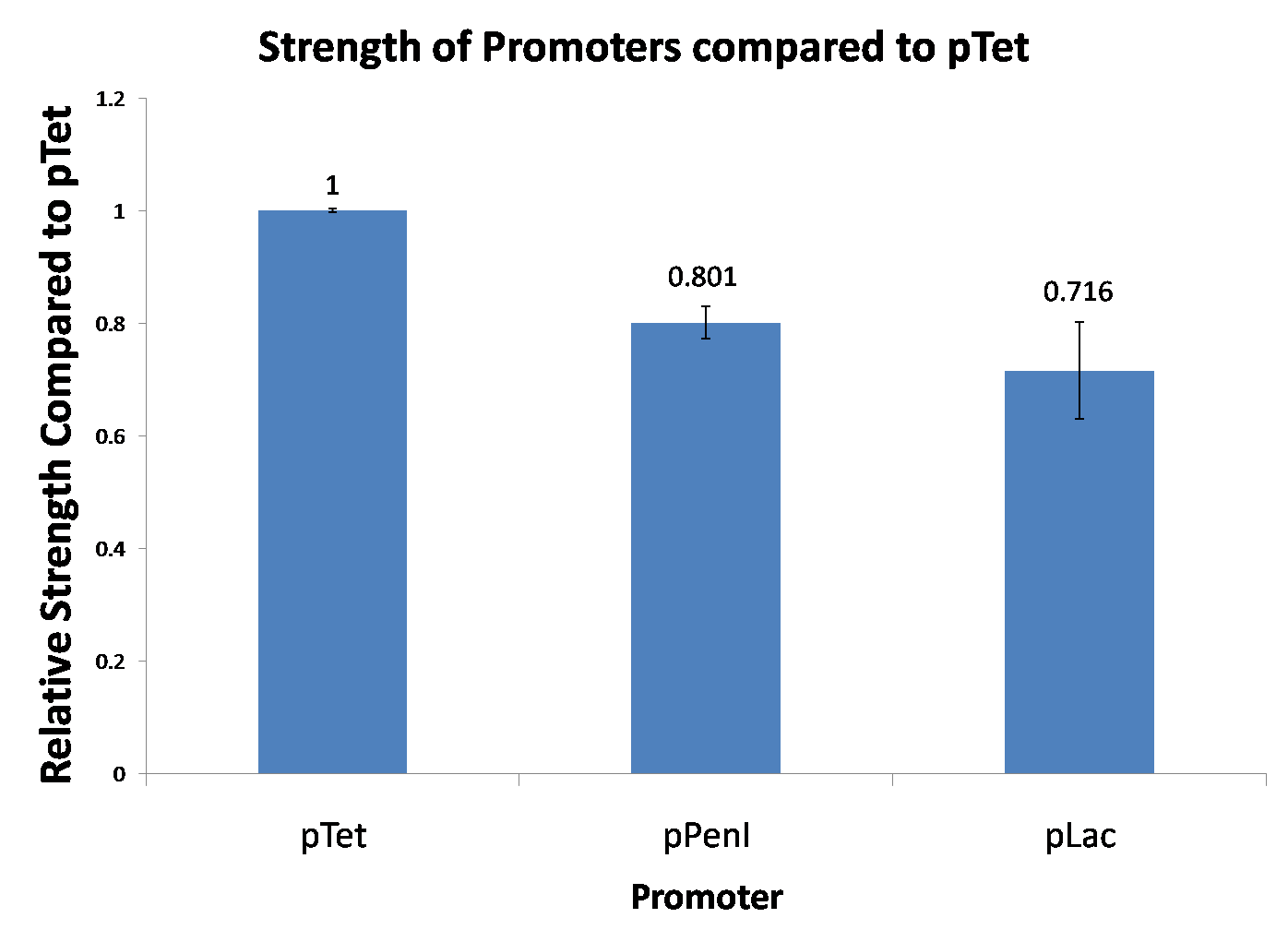Team:NYMU-Taipei/Project/Promoter Strength Testing
From 2009.igem.org
(Difference between revisions)
Daadracula (Talk | contribs) (New page: == 2009-08-25 Reporting Assay == {| border="1" | 800px || '''Figure 1.''' This is the graph of our promoter strength testing. |} == 2009-09-07 Reporting ...) |
Blackrabbit (Talk | contribs) |
||
| Line 1: | Line 1: | ||
| + | *All experiments were done in ''E. coli DH5alpha''. | ||
| + | *Maturation rate of GFP is 6.5mins [1] | ||
| + | *All our analysis was done in excel documents: [[File:NYMU-promotertesting.zip]] and done based on the paper by Leveau and Lindow [2]. | ||
| + | |||
== 2009-08-25 Reporting Assay == | == 2009-08-25 Reporting Assay == | ||
{| border="1" | {| border="1" | ||
| - | | [[image:NYMU 2009-08-25.png|800px]] || '''Figure 1.''' This is the graph of our promoter strength testing. | + | | [[image:NYMU 2009-08-25.png|800px]] || '''Figure 1.''' This is the graph of our promoter strength testing. Since we did not do biological replicates, we are not able to confirm the validity of the result. |
|} | |} | ||
== 2009-09-07 Reporting Assay == | == 2009-09-07 Reporting Assay == | ||
{| border="1" | {| border="1" | ||
| - | | [[image:NYMU 2009-09-07.png|800px]] || | + | | [[image:NYMU 2009-09-07.png|800px]] || ''' Figure 2.''' Again, we did not do biological replicates so we are not able to confirm its validity. At least we can tell from these two experiments that pPenI is stronger than pTet which is stronger than pLac (in DH5alpha) |
|} | |} | ||
| Line 12: | Line 16: | ||
{| border="1" | {| border="1" | ||
| - | | [[image:NYMU 2009-09-18.png|800px]] || | + | | [[image:NYMU 2009-09-18.png|800px]] || '''Figure 3.'''From this third experiment, we can see that the relative strength between pPenI and pTet has not changed much in these three experiments. However, the relative strength between pLac and pTet has fluctuated quite a bit. Again, we did not do biological replicates. |
|} | |} | ||
== 2009-09-29 Reporting Assay == | == 2009-09-29 Reporting Assay == | ||
{| border="1" | {| border="1" | ||
| - | | [[image:NYMU 2009-09-29.png|800px]] || | + | | [[image:NYMU 2009-09-29.png|800px]] || '''Figure 4.''' We tested new promoters and measured their strength relative to pCI. This time we did a three-fold biological replicate. The error bars are 95% confidence intervals. |
|} | |} | ||
== 2009-10-05 Reporting Assay == | == 2009-10-05 Reporting Assay == | ||
{| border="1" | {| border="1" | ||
| - | | [[image:NYMU 2009-10-05.png|800px]] || | + | | [[image:NYMU 2009-10-05.png|800px]] || ''' Fiqure 5.'''We tested the relative strengths of all the new promoters (p22, pCI, pLux, pLas) and old promoters (pTet, pPenI, pLac) together. However, we only did three-fold biological replicates on the new promoters. pCI was the strongest promoter, and it was also clearly seen visually when comparing the overnighted liquid cultures. |
|} | |} | ||
| - | == 2009-10- | + | == 2009-10-13 Reporting Assay== |
| + | {| border="1" | ||
| + | | [[File:NYMU 2009-10-13.png|800px]] || '''Figure 6.''' This time we did six-fold replicates for pTet, pPenI, and pLac. However, two of the pTet values were duds, and two others suspiciously looked liked duds too. So the pTet confidence interval contains only two values, while pPenI and pLac both contain six. Comparing this result to the previous results, | ||
| + | |} | ||
| - | == | + | |
| + | == Conclusion == | ||
| + | * We have tested the relative strengths of p22, pCI, pLux (basal level), pLas (basal level), pTet, pPenI, and pLac. | ||
| + | * We obtained relatively consistent results between the relative strengths of p22, pCI, pLux, and pLas, while obtaining not so consistent results between pTet, pPenI, and pLac. | ||
| + | * We think it is due to the lack of experience earlier on and confusing us which relative strengths between pTet, pPenI, and pLac were correct. | ||
| + | |||
| + | |||
| + | == Reference == | ||
| + | [1] Megerle JA, Fritz G, Gerland U, Jung K, Radler JO: Timing and Dynamics of Single Cell Gene Expression in the Arabinose Utilization System, Biophys J, 2008, 95(4): 2103–2115 | ||
| + | <br>[2] Leveau JHJ and Lindow SE, Predictive and Interpretive Simulation of Green Fluorescent Protein Expression in Reporter Bacteria, Journal of Bacteriology, 2001, 183(23): 6752-6762 | ||
Revision as of 22:42, 21 October 2009
- All experiments were done in E. coli DH5alpha.
- Maturation rate of GFP is 6.5mins [1]
- All our analysis was done in excel documents: File:NYMU-promotertesting.zip and done based on the paper by Leveau and Lindow [2].
Contents |
2009-08-25 Reporting Assay
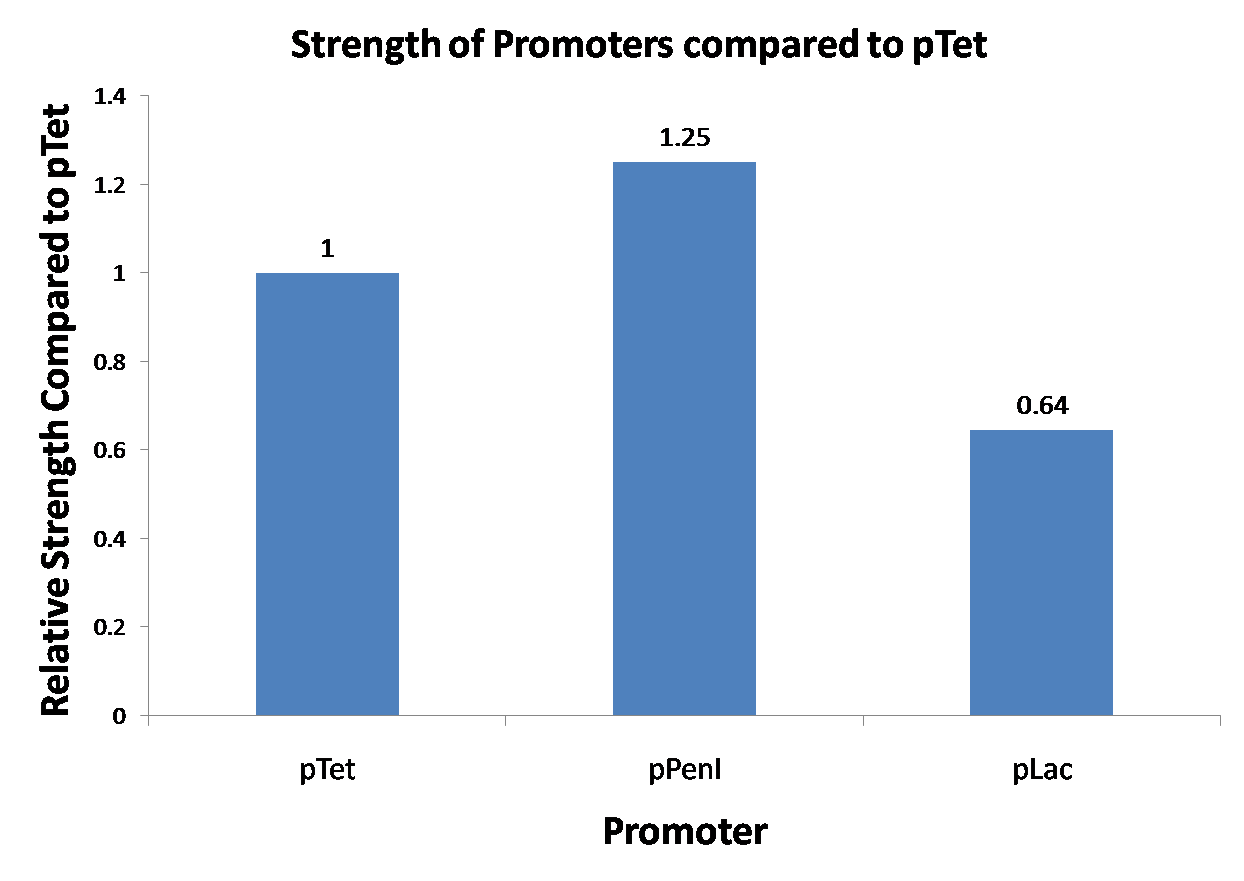 | Figure 1. This is the graph of our promoter strength testing. Since we did not do biological replicates, we are not able to confirm the validity of the result. |
2009-09-07 Reporting Assay
2009-09-18 Reporting Assay
2009-09-29 Reporting Assay
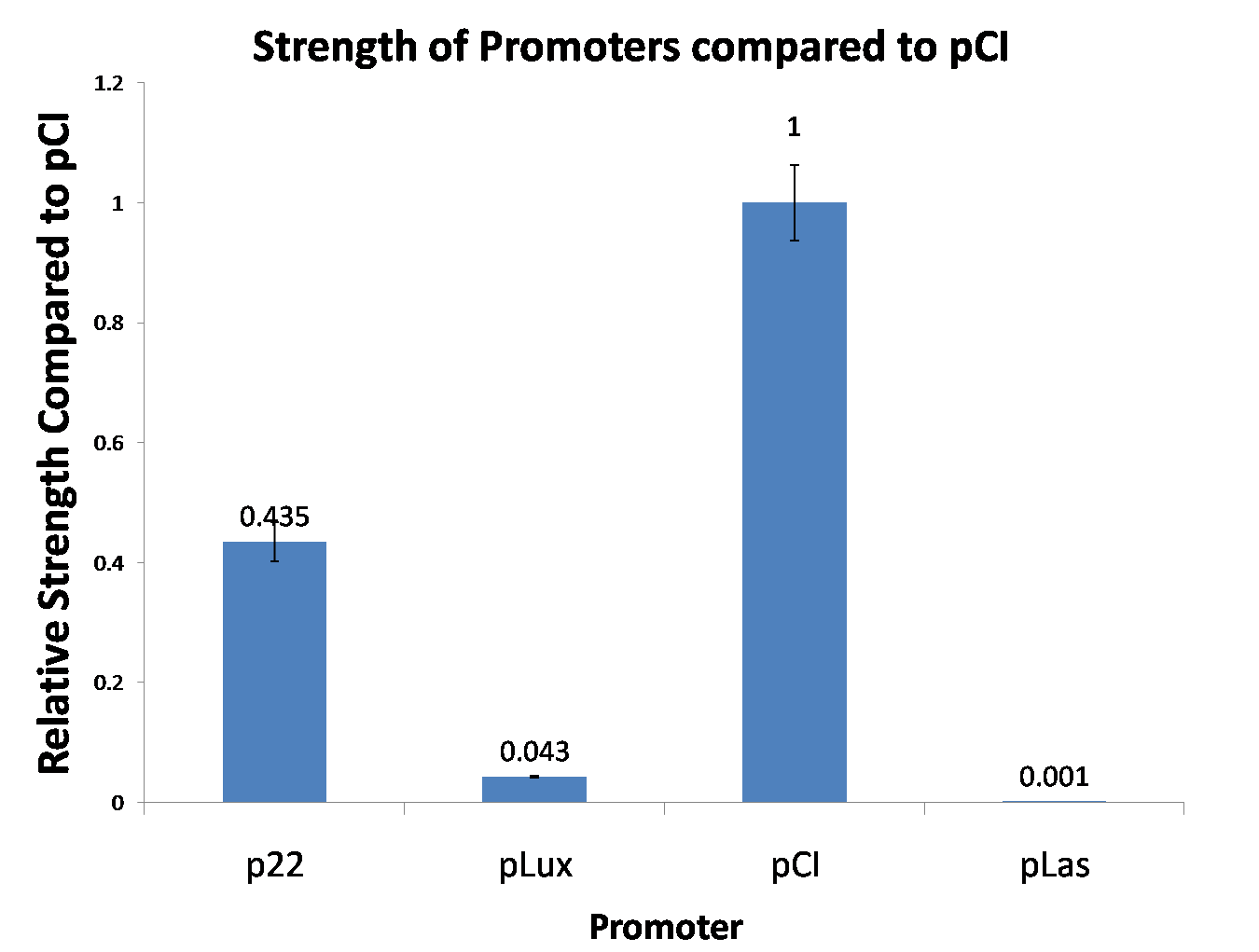 | Figure 4. We tested new promoters and measured their strength relative to pCI. This time we did a three-fold biological replicate. The error bars are 95% confidence intervals. |
2009-10-05 Reporting Assay
2009-10-13 Reporting Assay
Conclusion
- We have tested the relative strengths of p22, pCI, pLux (basal level), pLas (basal level), pTet, pPenI, and pLac.
- We obtained relatively consistent results between the relative strengths of p22, pCI, pLux, and pLas, while obtaining not so consistent results between pTet, pPenI, and pLac.
- We think it is due to the lack of experience earlier on and confusing us which relative strengths between pTet, pPenI, and pLac were correct.
Reference
[1] Megerle JA, Fritz G, Gerland U, Jung K, Radler JO: Timing and Dynamics of Single Cell Gene Expression in the Arabinose Utilization System, Biophys J, 2008, 95(4): 2103–2115
[2] Leveau JHJ and Lindow SE, Predictive and Interpretive Simulation of Green Fluorescent Protein Expression in Reporter Bacteria, Journal of Bacteriology, 2001, 183(23): 6752-6762
 "
"
